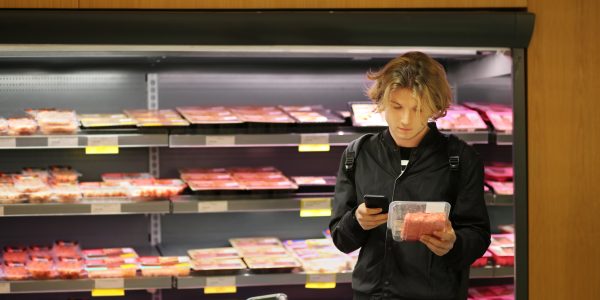An experienced live export vet has given ABC’s 7.30 a glimpse into the conditions endured by animals on live export ships — and it’s not a pretty picture.
Space
In addition to the stress of the unfamiliar environment, noise and constant ship movement, at the typical high stocking density of a long haul voyage, it is not usually possible for all animals to lie down naturally at the same time. Stocking densities allowed by Australian Standards for the Export of Livestock (ASEL) are much higher than any land-based feedlot or intensive housing system.
This image contains content which some may find confronting

Bedding
Adequate sawdust or other soft bedding to rest on is not available to cattle on board a live export ship. Some sawdust provisions are required but they are not nearly sufficient, leaving animals travelling on hard, non-slip surfaces which can often result in painful abrasions, lameness and injury. Australian standards only indicate that bedding should be replaced “as necessary” leaving this decision in the hands of exporters.
This image contains content which some may find confronting
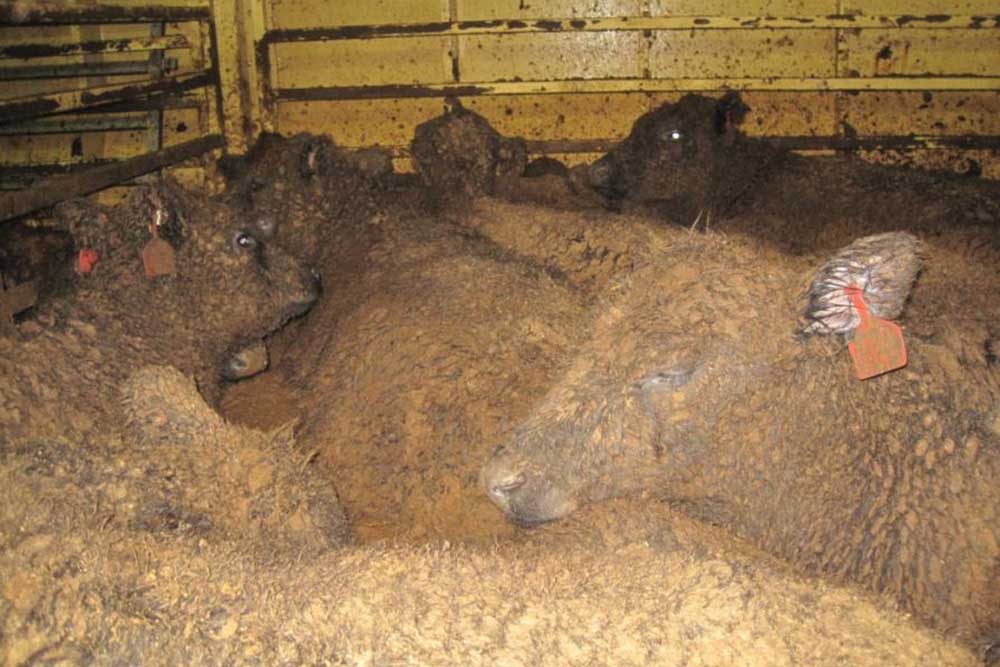
Faeces
The build-up of wet faeces on live export ships can lead to cattle becoming coated in excrement. Apart from being distressing and unhygienic, faecal coated cattle cannot dispel heat through their body surface and are at greater risk of heat stress.
This image contains content which some may find confronting
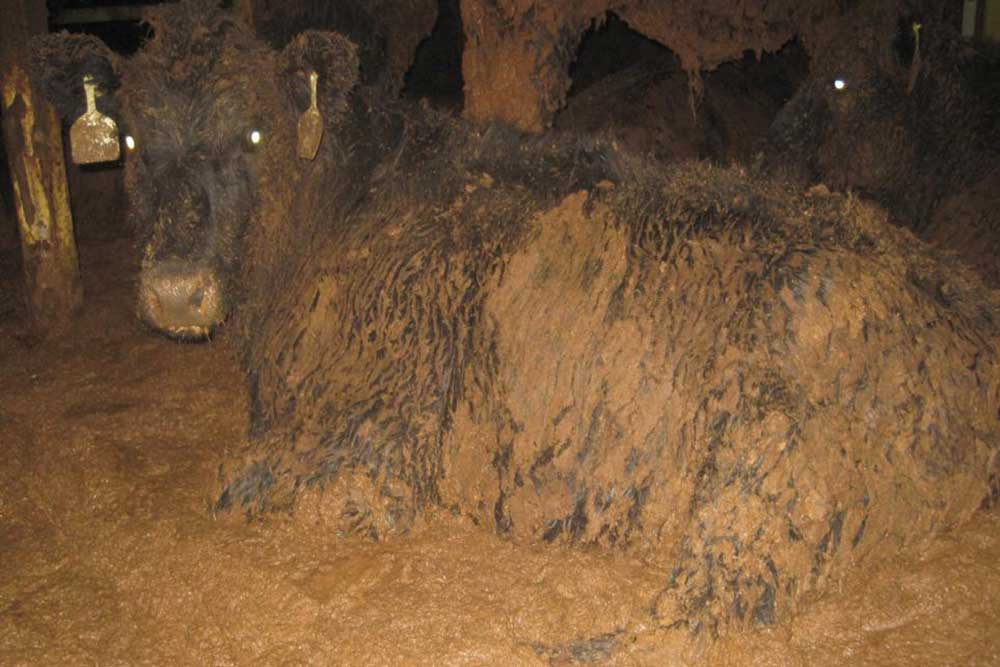
Heat
Heat stress is a constant risk on live export ships. Animals suffering from heat stress literally cook from the inside out — they can suffer for days as their organs shut down one by one. In 2013, more than 4,000 Australian sheep died on board the Bader III as temperatures in the Gulf soared — turning the ship they were traveling on into a floating oven.
This image contains content which some may find confronting

Discomfort
Ship floors are often covered in non-slip ‘cleating’ (as pictured) which doesn’t allow sheep and cattle to rest comfortably. This can cause abrasions and lameness which may lead to septicaemia.
This image contains content which some may find confronting
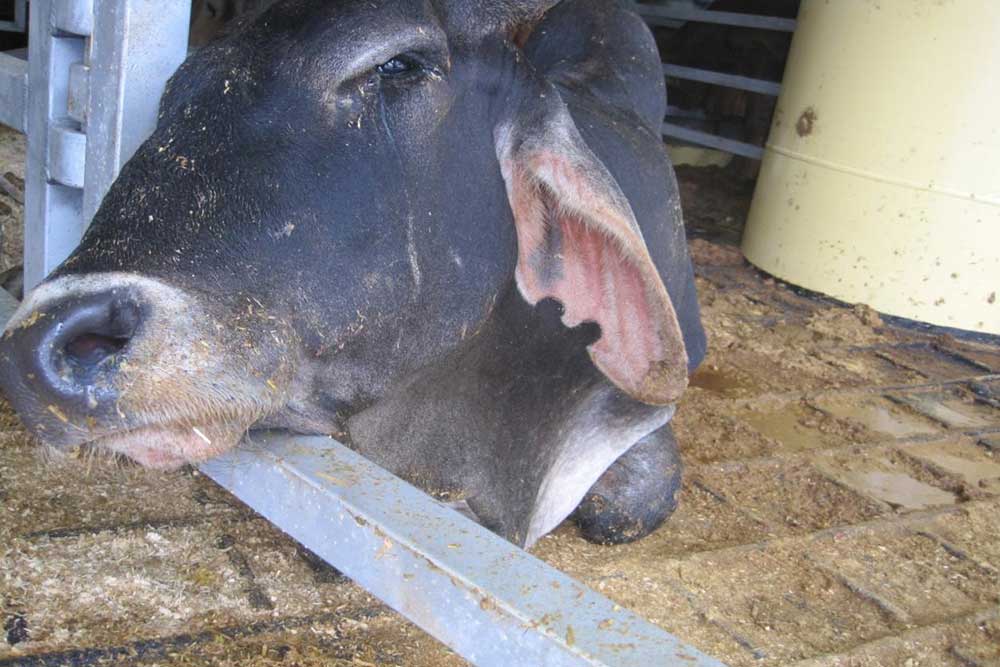
Injuries
Hoof damage, painful skin abrasions and lameness are common on board live export vessels due to the abrasive deck surface and inadequate drainage. Injured animals are often euthnised.
This image contains content which some may find confronting
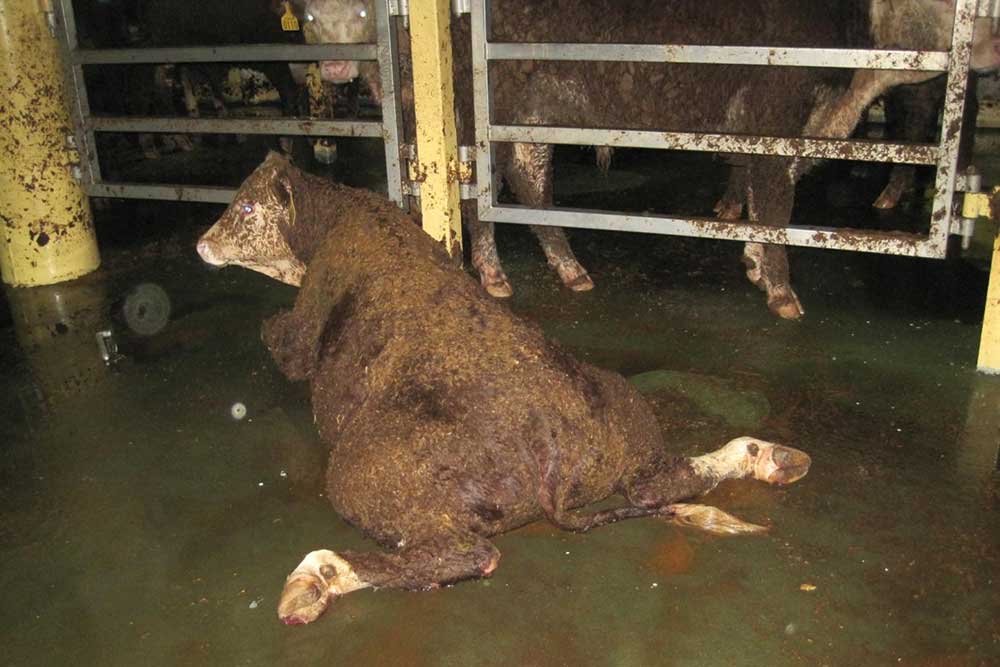
This image contains content which some may find confronting
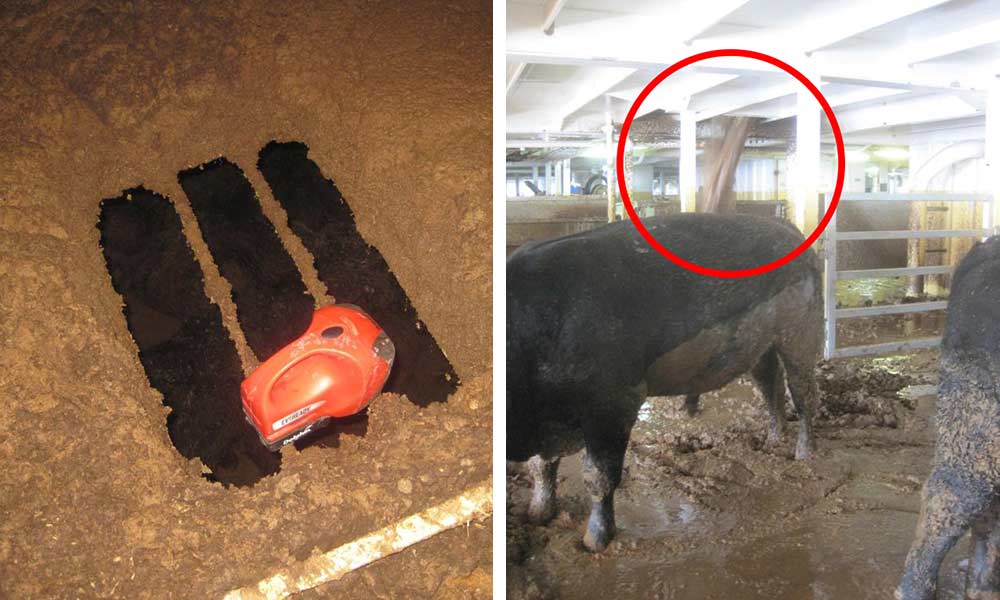
Infections
Untreated, open wounds are at risk of infection and septic cellulitis from exposure to faeces and urine. Skin abrasions are often go unnoticed as they are covered by faecal matter. Infections can be so painful that an animal will refuse to rise, which in turn stops them feeding and drinking and leaves them lying in their own faeces.
This image contains content which some may find confronting
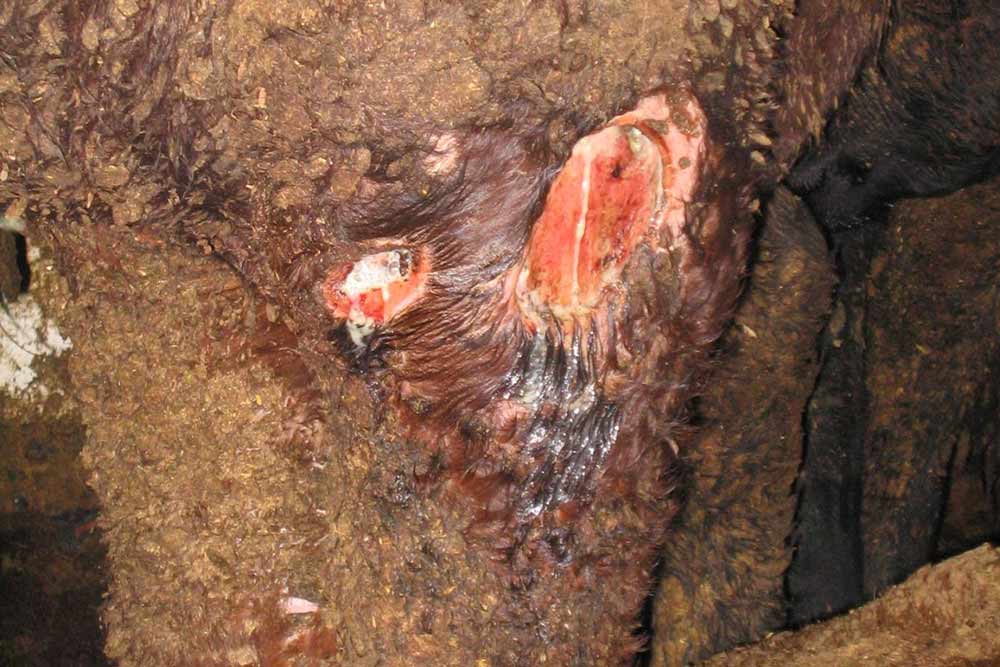
Disease
High stocking densities, high levels of ammonia and the stressful and unfamiliar conditions on board ships can result in animals failing to eat (resulting in death), eye infections, heat stress, salmonellosis and pneumonia.
This image contains content which some may find confronting
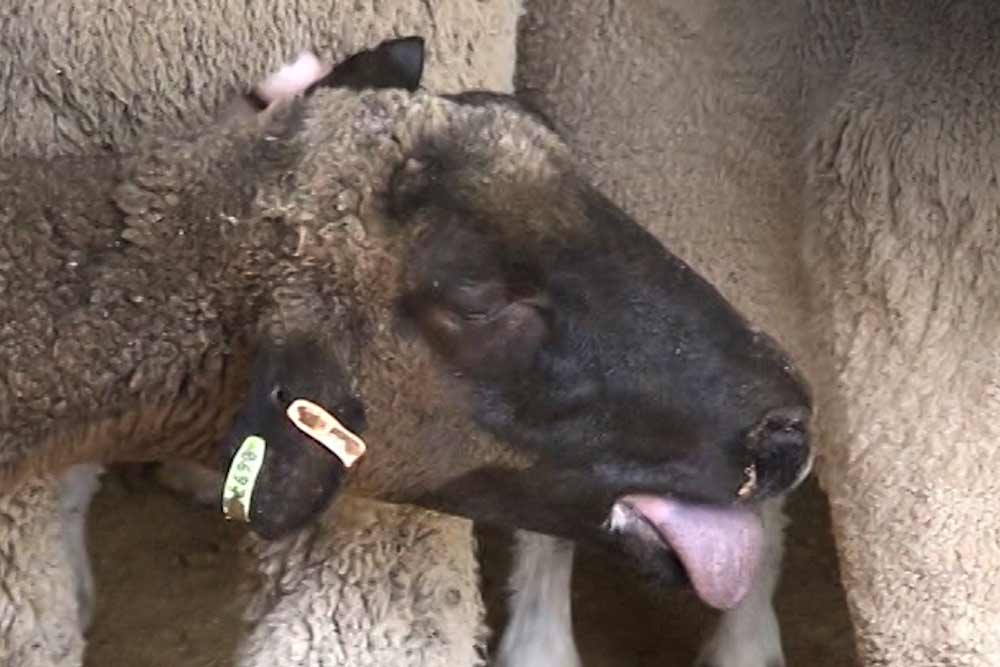
Food and water contamination
Dirty pens filled with dirty cattle unsurprisingly leads to dirty water and feed troughs, contaminated with urine and faeces. This can result in animals suffering from dehydration and not getting enough food.
This image contains content which some may find confronting
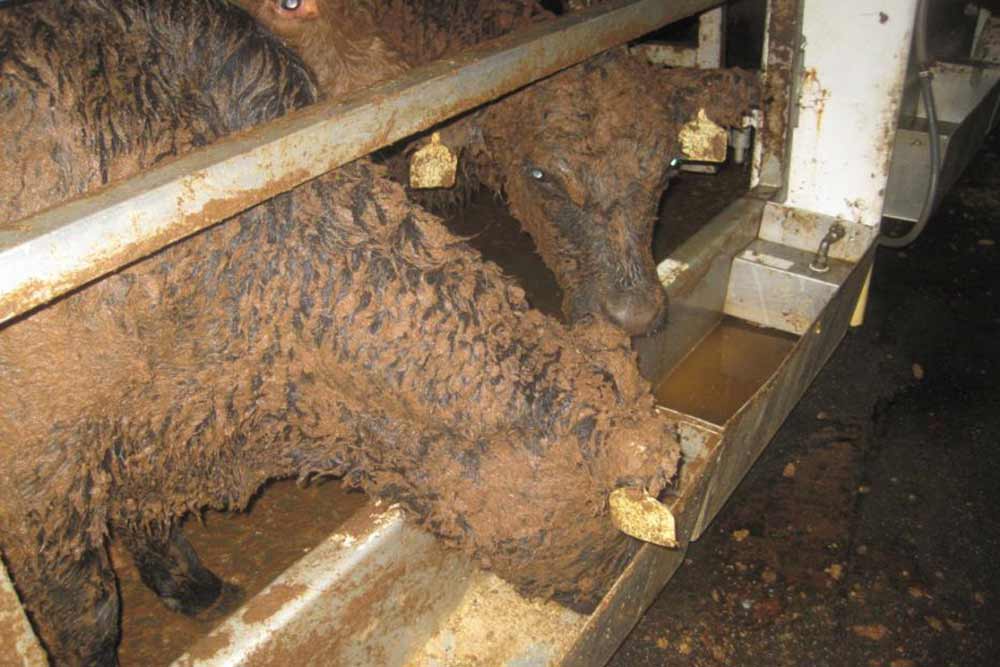
Rough seas
Live export ships routinely face rough weather at sea. Rough seas and unexpected weather put animals at increased risk of injury and sea sickness. Ship rolling caused by rough weather results in discomfort for animals, making it harder for them to even stand properly.
This image contains content which some may find confronting
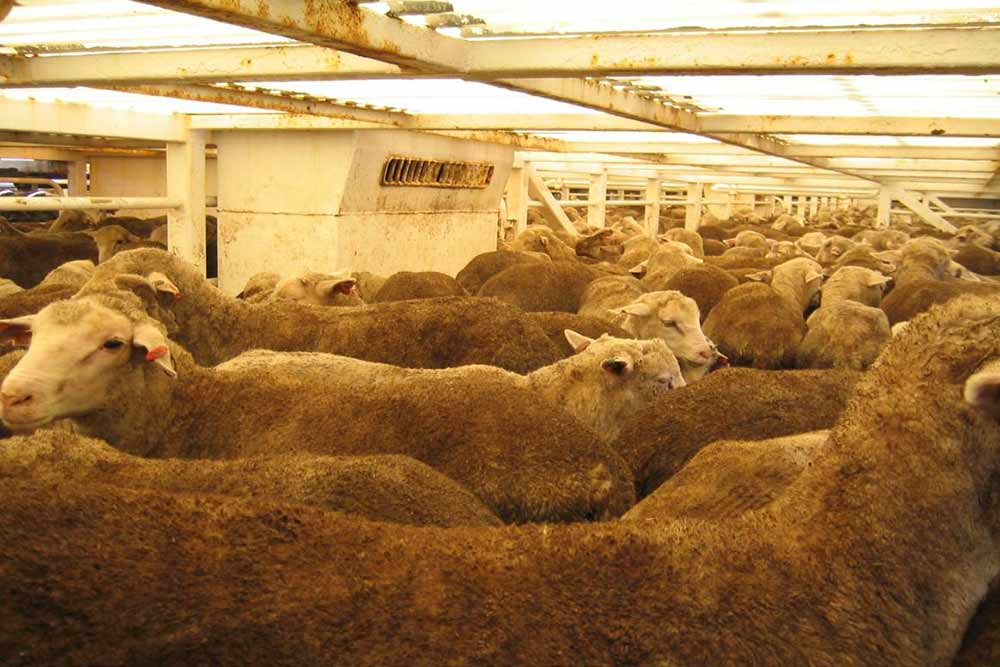
Mechanical failures
Live export has a history of disasters that have been devastating for animals – ventilation problems, engine failure and even fire have caused suffering and fatalities. Every journey runs the risk of something going wrong and animals are the ones to pay the price.
This image contains content which some may find confronting
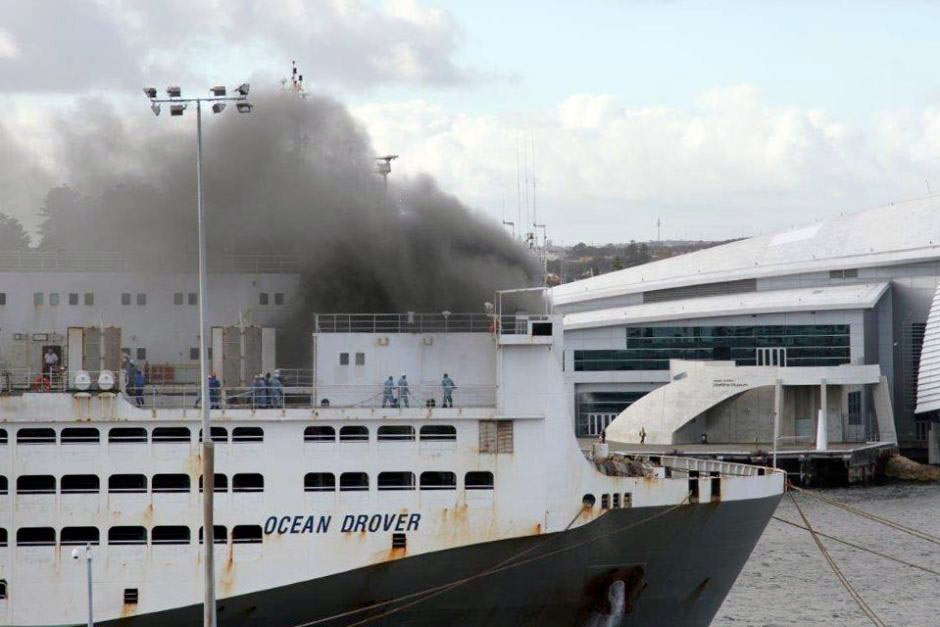
Fatigue
Cattle have been known to lie down for long periods of time when the decks are cleaned and new sawdust is laid. Dr Simpson states this is a result of exhaustion and fatigue from animals reluctant to lie down in their own faeces not getting sufficient respite. Due to the lack of space on board, animals are at risk of being smothered, injured or repeatedly disturbed by others as they attempt to rest.
This image contains content which some may find confronting
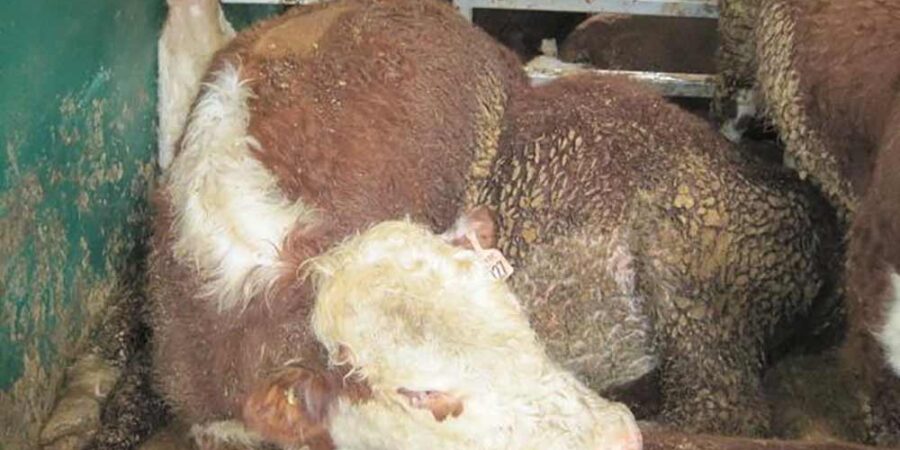
Birthing
Animals are often not properly tested for pregnancy before boarding and that has led to cows and ewes giving birth at sea. Animals who go into labour on live export ships are not often given the additional space and care that they need, and their young may be trampled or injured. As the calves or lambs will likely be killed (usually for commercial reasons) the new mothers’ risk of mastitis is significantly increased.
This image contains content which some may find confronting
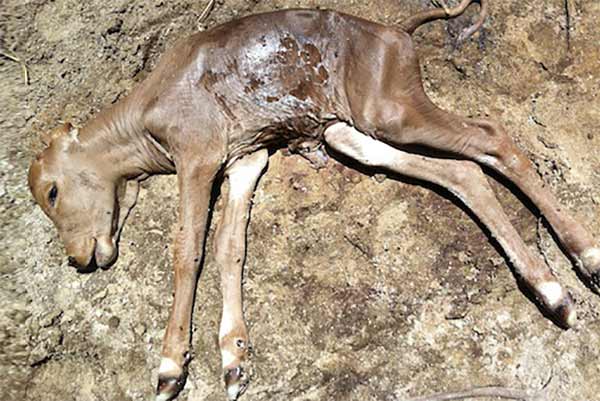
Death
Australian standards specify that no animal weighing more than 650 kg should be loaded on board a live export vessel. But some exporters have ignored these guidelines and loaded heavier animals, like the bull pictured, risking their lives. In Dr Simpson’s report to the government, she warned that any animal over 500 kg has an increased risk of injury.
Incredibly, government regulations allow a mortality rate of 2% of sheep and 1% of cattle on every voyage — which means hundreds, if not thousands, of animals can die at sea without any investigation into the cause.
This image contains content which some may find confronting

This industry entails unnecessary pain and suffering for all the animals involved within it. Anyone who tells you different is either ill-informed, they're a liar or they're staying silent for fear of losing their job.
Help spare animals from live export cruelty
For as long as this cruel trade in living beings exists, we remain as committed as ever to sparing animals from falling victim to it. Will you join us?
Please spare one minute now to lend your voice to the animals — and help create a world free from the horror of live export.





